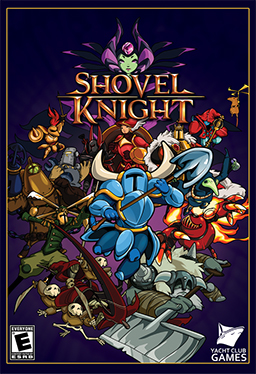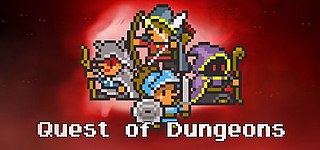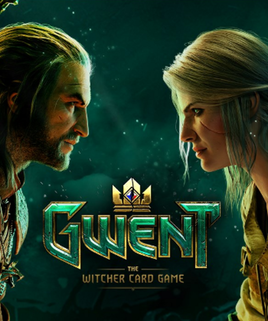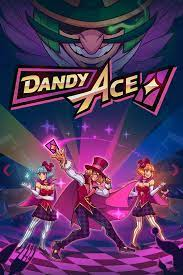
Roguelike is a subgenre of role-playing computer games traditionally characterized by a dungeon crawl through procedurally generated levels, turn-based gameplay, grid-based movement, and permanent death of the player character. Most roguelikes are based on a high fantasy narrative, reflecting their influence from tabletop role playing games such as Dungeons & Dragons.

The Pokémon Trading Card Game, abbreviated as PTCG or Pokémon TCG, is a collectible card game developed by Creatures Inc. based on the Pokémon franchise. It was first published in October 1996 by Media Factory in Japan. In the US, it was first published by Wizards of the Coast. In June 2003, Nintendo transferred the publishing rights from Wizards of the Coast to The Pokémon Company. As of March 2023, the game has sold over 52.9 billion cards worldwide.
Canfield (US) or Demon (UK) is a patience or solitaire card game with a very low probability of winning. It is an English game first called Demon Patience and described as "the best game for one pack that has yet been invented". It was popularised in the United States in the early 20th century as a result of a story that casino owner Richard A. Canfield had turned it into a gambling game, although it may actually have been Klondike and not Demon that was played at his casino. As a result it became known as Canfield in the United States, while continuing to be called Demon Patience in the United Kingdom and elsewhere. It is closely related to Klondike, and is one of the most popular games of its type.

Magic: The Gathering is a video game published by MicroProse in March 1997 based on the collectible card game Magic: The Gathering. It is often referred to as Shandalar after the plane of Shandalar, where the game takes place. The player must travel the land and fight random enemies to gain cards, and defeat five wizards representing the five colors. The player must prevent one color from gaining too much power, and defeat the planeswalker Arzakon, who has a deck of all five colors. Adventure and role-playing elements are present, including inventory, gold, towns, dungeons, random battles, and character progression in the form of new abilities and a higher life point total. An oversized version of Aswan Jaguar was included in the game box.

Shovel Knight is a platform video game developed and published by Yacht Club Games. Development was crowdfunded and the game was released for Nintendo 3DS, Wii U, and Windows in June 2014. It was ported to OS X and Linux in September 2014, PlayStation 3, PlayStation 4, PlayStation Vita, and Xbox One in April 2015, Amazon Fire TV in September 2015, and Nintendo Switch in March 2017. Shovel Knight is inspired by gameplay and graphics of platformer games developed for the Nintendo Entertainment System.

Crypt of the NecroDancer is a roguelike rhythm video game developed and published by Canadian independent game studio Brace Yourself Games. The game takes fundamental elements of a roguelike dungeon exploration game and adds a beat-matching rhythm game set to an original soundtrack written by Danny Baranowsky. The player's actions are most effective when moving the character set to the beat of the current song and are impaired when they miss a beat, so it is necessary to learn the rhythmic patterns that the various creatures follow. The mixed-genre game includes the ability to import custom music, and the option to use a dance pad instead of traditional controllers or the keyboard. The game was released for Linux, OS X, and Windows in April 2015, being co-published by Klei Entertainment, for the PlayStation 4 and Vita in February 2016, for the Xbox One in February 2017, and for Nintendo Switch in February 2018. Crypt of the NecroDancer Pocket Edition, developed for iOS, was released in June 2016.

Quest of Dungeons is a roguelike indie game released on March 25, 2014 by Portuguese developer Upfall Studios. The game features 16-bit graphics to resemble games from the Super NES and Sega Genesis era. It was initially released for Windows, Mac and iOS and was later ported to Xbox One via ID@Xbox on September 7, 2015. In February 2016, it was announced that the game was being developed on Wii U and Nintendo 3DS and was released on September 29, 2016. It was later released for PlayStation 4 on January 17, 2017. On August 2, 2017, it was announced that it would be coming to the Nintendo Switch.

Paper Mario: Color Splash is a 2016 action-adventure role-playing video game developed by Intelligent Systems and published by Nintendo for the Wii U console. It is the fifth installment in the Paper Mario series, within the larger Mario franchise. The story follows Mario and his new ally Huey on a quest to save Prism Island and rescue Princess Peach from Bowser.

Gwent: The Witcher Card Game is a free-to-play digital collectible card game developed and published by CD Projekt for Windows, PlayStation 4, and Xbox One in 2018, for iOS in 2019, for Android in 2020, and for macOS in 2021. The game is derived from the card game of the same name featured in Andrzej Sapkowski's The Witcher novels and playable in The Witcher 3: Wild Hunt video game. An expansion, titled Gwent: Rogue Mage, was released in 2022.

Hearthstone is a digital collectible card game released by Blizzard Entertainment in 2014, available for Microsoft Windows and macOS PCs and iOS and Android smartphones. The game is free-to-play, with players gaining in-game currency and card packs via winning matches and completing quests, while real-world money can be spent to acquire additional card packs and cosmetic items. The game has been critically well-received and financially successful, estimated in August 2017 to earn nearly US$40 million per month. As of November 2018, Blizzard has reported more than 100 million Hearthstone players. Blizzard has continued to expand the game with the addition of multiple expansions, adventures and game modes.
868-HACK is a 2013 roguelike video game developed and published by Michael Brough. The player controls a hacking program in a computer system and must grab as much computer data as possible before a defence program destroys it.

Slay the Spire is a roguelike deck-building video game developed by American studio Mega Crit and published by Humble Bundle. The game was first released in early access for Microsoft Windows, macOS, and Linux in late 2017, with an official release in January 2019. It was released for PlayStation 4 in May 2019, for Nintendo Switch in June 2019 and for Xbox One in August 2019. An iOS version was released in June 2020, with an Android version released in February 2021.

Hades is a roguelike video game developed and published by Supergiant Games. It was released for macOS, Nintendo Switch, and Windows in September 2020, which followed an early access release in December 2018. It was later released for PlayStation 4, PlayStation 5, Xbox One, and Xbox Series X/S in August 2021.
A roguelike deck-building game is a hybrid genre of video games that combines the nature of deck-building card games with procedural-generated randomness from roguelike games.

Monster Train is a roguelike deck-building video game, developed by American studio Shiny Shoe. It was released on May 21, 2020 on Steam and was later released for Xbox One on December 17, 2020 and for iOS on October 27, 2022. A Complete Edition of the game titled Monster Train First Class was released for Nintendo Switch on August 19, 2021. The game received positive reviews, being nominated to the Game Awards 2020, in the category Best Strategy/Tactics Games of 2020

Fights in Tight Spaces is a roguelike deck-building tactical game developed by British studio Ground Shatter and published by Mode 7 Games. The game was released in December 2021 for Microsoft Windows, Xbox One and Xbox Series X/S after an Early Access period that started in February 2021. It is also scheduled to release for Nintendo Switch, PlayStation 4 and PlayStation 5 in May 2023.

Inscryption is a roguelike deck-building game developed by Daniel Mullins Games and published by Devolver Digital. Inscryption was released for Windows on October 19, 2021. It was released on Linux and macOS on June 22, 2022, which was followed by PlayStation 4 and 5 versions in August. A Nintendo Switch port was released in December 2022. Versions for Xbox One and Xbox Series X/S released in April 2023. Inscryption received generally positive reviews and won several Game of the Year awards. The game sold 1 million copies by January 2022.
A Soulslike is a subgenre of action role-playing and action-adventure games known for high levels of difficulty and emphasis on environmental storytelling, typically in a dark fantasy setting. It had its origin in Demon's Souls and the Dark Souls series by FromSoftware, the themes and mechanics of which directly inspired several other games. Soulslike games developed by FromSoftware themselves have been specifically referred to as Soulsborne games, a portmanteau of Souls and Bloodborne. The "Soulslike" name has been adopted by a number of critics and developers. However, there have also been questions whether it is a true genre or a collection of shared mechanics.

Dandy Ace is a 2021 roguelike action dungeon crawler video game developed by Mad Mimic and published by Neowiz. It was released for Microsoft Windows and macOS in March 25, 2021. Console ports for Xbox One and Nintendo Switch were later released in September 2021, and in November 2021 for the PlayStation 4 version.

Shovel Knight Dig is a roguelite platform game developed by Nitrome and Yacht Club Games. It is the third game of the Shovel Knight series and a prequel to the original. It was released September 23, 2022 for the Nintendo Switch, Windows, macOS, and iOS via Apple Arcade. The game follows protagonist Shovel Knight as he fights enemies and collects treasure, while journeying through several different levels in an effort to recover his stolen treasure bag from a thief named Drill Knight. When the player dies, they lose all obtained upgrades, returning to the surface with a fraction of the treasure they collected while playing. At the surface, they can spend treasure on a variety of items that make gameplay easier.
















